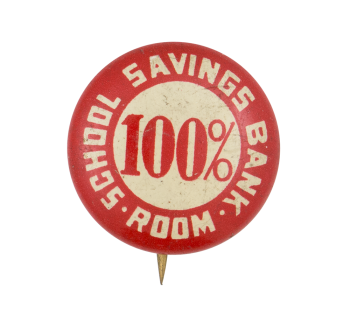| Category | |
|---|---|
| Additional Images | |
| Sub Categories | |
| Text on Button | SCHOOL SAVINGS BANK ROOM 100% |
| Image Description | red text on a white background with a red outer edge with white text on it |
| Back Paper / Back Info |
THRIFT INC. |
| Back Style | |
| The Shape | |
| The Size | |
| Additional Information | During the Progressive Era in the U.S., it was common for elementary schools to sign a contract with a local bank for a "school savings program", in which students brought a small amount of money to class each week. The teacher then deposited that money in a savings account for the student that could not be accessed until a certain amount of money, such as two dollars, had been saved. The system was a part of the school banking initiative started by J. H. Thiry in 1885 in New York as a way of encouraging "thrift," or saving money, in the younger generation. By 1914, the school savings idea was gaining popularity with over half of all Illinois students also making deposits. The "100% room" on this button may indicate that it was given as a reward to a classroom where every pupil participated in the program, though this is not certain. |
| Sources |
Bowman, M. (1922). The School Savings Bank. The Elementary School Journal, 23(1), 56-67. Retrieved from www.jstor.org/stable/995599. Ekirch, Arthur A. (1914). "System of Small Accounts Teaches Children Thrift." The New York Times. Retrieved from https://timesmachine.nytimes.com/timesmachine/1914/01/30/101915413.html….
|
| Catalog ID | CA0504 |


